| Gothic & Neo-Gothic Etymology
ETYMOLOGIE / etymology If the word Gothic in both English and French was early understood to refer to the Goths, an ancient Germanic tribe, their language and mores, and in the first part of the seventeenth century (1615 in France and 1640 in England) came to refer to an architectural style, its function -- whether pejorative, as in Boileau's Art poétique (1674, II:21-22), where the poet ridicules Ronsard's «idylles gothiques», or meliorative, as in Horace Walpole's Correspondence or in the subtitle to his Castle of Otranto (1764),«a Gothick tale» -- has generally been misunderstood. Critics of the seventeenth century see in it only a negative value, while those of the eighteenth century and later find it important only for understanding certain aspects of Romanticism as Hugo's Préface de Cromwell (1827) and his theater. Such oversimplification may indeed contain a grain of truth, but in the present day they demand a nicer shade of interpretation. See the commentary below. BG Gothic novel is a relatively recent derivation from the subtitle given by Horace Walpole to his prose work, The Castle of Otranto, a Gothic Tale (1764-65), second editions : Gothic Story. There is no contemporary evidence in other English authors that links Gothic to what has been later termed the dominant prose genre of the 18th and 19th centuries, the novel; on the contrary, fiction prose writers of longer, in-4° and in-12° works of the second half of the 18th century have generally referred to romance (Ann Radcliffe, The Sicilian Romance, 1790; The Romance of the Forest, 1791) or tale (S. Lee, The Recess, or a Tale of Other Times, 1783-85) in their title pages. PGM, JMG Nowadays, Gothic novel is an internationally adopted term unifying different and often diverging critical tendencies which nevertheless share the basic genetic assumption of a peculiar literary.
ETUDE SEMANTIQUE / Definitions 1. Adj.(History of Art) Designating the art, especially the architecture developed in Western Europe from the 12th century to the Renaissance. 2. Subst.(Linguistics) East Germanic language of the Visigoths. 3. Adj.(Literature) Designating a type of literature using medieval references to produce an effect of horror. 4. Subst. (Literature, art) A literary kind or genre. Genre originating in England in the 1760's and spreading rapidly and massively both at home and abroad («la vogue anglaise») during the last two decades of the 18th century. 5. The term Neo-Gothic - or more frequently New Gothic - designates all Gothic art forms subsequent to an originary Gothic phase. It is used more restrictively to refer to a phase opening in the middle years of the 20th Century. Primary features of the notion of New or Neo-Gothic are its resistance to clear-cut definition and a certain terminological instability. These stems at least in part from difficulties in end-dating and in adequately defining and circumscribing an original Gothic. Following the main semantic distinctions found in the Oxford Dictionary of English Etymology, critical studies and current usage of the term can be retraced essentially to two meanings related directly to literature and literary history: a: a chronological displacement of setting, and b: a value judgement stemming from the aesthetic 17th century querelle opposing the ancient to the modern (V. article ANCIENS ET MODERNES). «Belonging to, or characteristic of, the Middle Ages; mediaeval,'romantic' as opposed to classical»: besides Walpole's fictional creation, bishop Hurd's Letters on Chivalry and Romance (1762) are quoted since they offer a critical revaluation of Spenser's Faerie Queen, a «Gothic poem» situated in a past revisited according to the «antiquarian» outlook celebrated by homologous texts such as Ossian (1760) or the «graveyard school» of poets all active between 1730 and 1750. Consequently, the «gothic revival» in architecture sponsored by Wren and Langley and glorifying the un-classical pointed arch of ruinous mediaeval cathedrals is somewhat haphazardly linked to literary production through a metaphoric process of «convergence» between Walpole's bizarre mansion, Strawberry Hill, and his Castle of Otranto (M. Billi, 1986, p. 135; but also M. Lévy's thesis, 1968). A temporal dimension which thus becomes a physical, spacial one, engendering a rich variety of interpretations all revolving around the fixed archetype of the castle-fortress-manorial seat considered as the essential unit within a system of reference devoid of any historical significance but capable instead of functioning on its own ? as a textual device. The emphasis placed on the «vertical» as evidence of under-lying, latent structures marked the emergence of new critical approaches assigning to the unconscious (basically through dreams and other apparently irrational characteristics of the GN, again derived from Walpole's letter to Cole of March 9, 1765, where he spoke of «a very natural dream» as the prime cause of his «gothic story») the status of an all-encompassing theory, as expressed by the Surrealists in the thirties down to more recent contributions (L. Abensour, J. Chénieux in the March 1984 issue of Europe). In this acceptation of the term, gothic as a «mediaeval» code of reference is therefore seen as a reaction to Augustean ideals of classic purity and has aptly become a prelude to the «romantic» pre-eminence in literature. Sense b. refers to the «barbarous, rude, uncouth, unpolished, in bad taste», rendering at first a more philologically precise reading of the term, starting with Dryden's translation of Dufresnoy (1695) where «the Ancient gust» is clearly separated from everything else which is in a «Barbarous or Gothique manner», leading to the epistemological link established later on by Voltaire, among others, between a historical period which originally witnessed the wasting and destruction of Western culture at the hands of «savage» Northern tribes (the «Goths» and «Vandals») and the parallel introduction of foreign and strange artistic modules (properly «Saxon», «Romanic» or «Norman») whose practical realization and magnification in mediaeval buildings rested firmly on the progressive strengthening of the feudal ? social, economic, political ? system. An explicitly unfavourable judgement on a period or an art form considered up to the mid-XVIIIth century «irregular» and therefore «unnatural» by most (John Evelyn, 1697; l'Encyclopédie, art. «Architecture»; Addison's Spectator, n° 62) but gradually revised and reinterpreted by some as a new aesthetic principle based on landscaping (bishop Warburton's note to Pope's Epistles) and culminating in Burke's Inquiry (1756). Pope's revaluation of Shakespeare's works in his well-known Preface of 1725 was preceded by Addison's rethinking of Locke's ideas in the «Pleasures of the Imagination» (1712), where both essayists definitely established the «extravagant» and the «asymmetrical» as categories pertaining to the «natural», a new perception of artistic enjoyment. The descriptive passages in Mrs. Radcliffe's novels are thus seen by many critics as imaginative renderings of the new theories on the «sublime» and the «picturesque» linking the «gothic» to modern, i.e. pre-romantic, sensibility as opposed to ancient, i.e. classical-rationalistic, respect of and conformity to rules and regulations. gothic novel: Narrative genre that developed throughout Europe and America from roughly 1750 to 1850. In its most familiar form, this type of fiction was characterized by horror, violence, supernatural effects, usually set against a backdrop of the Middle Ages, frequently a gloomy and isolated castle. Bien qu’on en use parfois plus largement aux Etats-Unis, l’expression devrait être réservée aux oeuvres qui se distinguent non seulement par une atmosphère angoissante et par le recours au surnaturel, mais aussi par la mise en scène d’éléments architecturaux de l’époque médiévale. novel of terror; tale of terror/roman terrifiant; conte de terreur: dark novel/roman noir, dreadful (subst), penny dreadful/roman populaire d’horreur. gothicism : As a literary category, the Gothic appears in history as a link betwen various trends, movements, sensibilities, caracterized by excess, the uncouth, bad taste, sado-masochist themes. etc. Pre-Gothic marks for instance can be identified in the baroque ; on the other side some sources of the fantastic can also be ascribed to the Gothic current.
COMMENTAIRE / Analysis I . The Gothic (BG) II . The Gothic novel 1 . Origine of the Gothic novel (PG.M) 2 . A problematic genre (PG.M) 3 . The posterity of the Gothic novel in late 19th century fiction (BT) 4 . The neo-Gothic I . The Gothic (BG) Thanks to Nathan Edelman's important dissertation, Attitudes of Seventeenth-Century France toward the Middle Ages, we now realize that after Henri IV, the seventeenth century in France was not completely anti-mediaeval, but that if such seems to be the case, it was undoubtely because of the propagandistic needs of a more and more centralized (and tyrannical) government. (So early a critic of Louis XIV as Voltaire understood this when writing in the «Introduction» to the Essai sur les moeurs --1756--about « un gouvernement gothique».) But the more positive attitude, even though forced underground, did nevertheless exist. Witness the same Boileau who in l'Art poétique, did not hesitate to laud either Villon or Marot (I:117-122). Also, Sir Christopher Wren's implicitly favourable comment, inspired by John Evelyn's report, «What we now call the Gothic style in architecture . . . I think should more correctly be termed Saracen» (Pevsner, p.243). Even though the eighteenth century treated of the Gothic more openly than did the seventeenth, a change in attitude did not develop immediately nor universally, so that Voltaire in La Pucelle (ca. 1739) cast ridicule on the Middle Ages and its habits by having Jeanne d'Arc appear nude, or the voice of the Church speak through a donkey, while chastizing in the Essai sur les moeurs (1756) contemporary historians who theorized all-too-vaguely about the feudal origins of certain French institutions (ch. 97); nor did Count de Tressan (one of the recognized leaders in the «Troubadour» movement) hesitate to re-arrange the ending of the Chanson of Roland (1777), as J.J.Rousseau, in Book v of Emile, continued to write sarcastically about society and its «entraves gothiques». Mediaeval monuments were scarce better treated; Notre Dame and St-Merri in Paris were transformed beyond the recognition of our historicism-oriented eyes. There were, however, other reasons than those just invoked for such travesties. Voltaire no doubt saw in the affabulation surrounding the story of Jeanne d'Arc more than a mere opportunity to be humourous; he saw there all the signs of that infâme (the Establishment) which he knew he could overcome only through a proper use of the burlesque; while his attack on feudal institutions was inspired both by his passionate belief in their inappropriateness to the modern world and by close observation of a famous quarrel that preoccupied both historians and legists over the Roman or Germanic origins of French society, partisans of the former being reactionary political philosophers, while partisans of the latter were generally of a more liberal persuasion. In the case of Tressan, there was of course the call to nationalism inspired by French losses in the Seven Years'War which allowed him (and countless others, like De Belloy with his important Siège de Calais -- 1765) to take the field and attack outmoded «classic» norms emulating in the bargain those learned predecessors who, for whatever reason -- cultural, artistic, philosophic, or political -- were attempting to edit mediaeval texts with the limited means at their disposal, like Lenglet-Dufrenoy and his version of the Roman de la Rose(1735) or Thomas Percy and his Reliques (1765). Rousseau, finally, was so scathing in his remarks not only because of his general attitude toward society but also because, beneath the pros and cons of Gothicism at the end of the century, he saw more contradictions and untenable claims or stances than could legitimately be proved -- unless one adopted his dog-in-a-manger approach. As for the renovation of churches in Paris and elsewhere: the hold of the «classical» canon over artists -- largely supported through the patronage of a centralized government -- was perhaps harder to shake off than ever that same nocive influence over literature and ideas. Yet it is one of the paradoxes of intellectual history that change in eighteenth-century attitudes was effected largely through artists and art-critics than through writers and thinkers. In daily life no one could avoid contact with mediaeval constructions, while guidebooks or treatises refused to ignore them. Even the names of a few mediaeval architects were passed on from generation to generation in the «dark ages» of neo-classicism. Thus Jean de Chelles, Pierre de Vigny, or even Erwin von Steinbach were not completely unknown throughout the two hundred years preceding 1800. And by the mid-eighteenth century with plans afoot for the completion, reconstruction, or restoration of such important edifices as the Church of Sainte-Croix in Orléans, the Cathedral of Cologne, or even the Castle of Betz, not to mention the ruins which remained after a fire had destroyed the abbey church at Royaumont in 1771 or the proliferation of false ruins in so-called «English» gardens from the same period, it was obvious that the acceptance of the Gothic was a fait accompli. With no less a personnage than Soufflot defending Gothic architecture as early as 1741, it is not surprising to find an astute critic like the abbé Laugier writing in the same vein around 1753. Laugier's insistence on the relatedness and equal importance of all the parts of a building, which seems to be a classical viewpoint, was in fact revolutionary... «The parts of an architectural order are the parts of the building itself. They must therefore be applied so that they not only adorn but actually complete the building. The existence of the building must depend so completely on the union of these parts that not a single one could be taken away without the collapse of the whole»... Characteristically, Laugier projected this arrangement into nature. The architect, he declared, should take as his model the primitive hut, the simplest, most rational form of human shelter against the elements, with its four columns supporting a roof (as Laugier saw it), as well as the masterworks of the architects of the past who had invariably been guided by this 'natural' form. Laugier's rejection of the wall as an essential element of construction was doubtless a rejection of the baroque, in which the wall had been used as a plastic, malleable element in the composition of a building. (Gossman, pp.142-43; our emphasis). This interest in Gothic architecture was re-inforced through a revival of «realism» in the theatre, where both costumes and stage-sets were often made the cynosure of the audience, sometimes at the expense of the dramatic vehicle. But, as so often happens, the fantasy-land of both opera and tragedy soon gave way before a desire for historical verisimilitude -- if not accuracy -- and, in their attempt to make the Middle Ages more familiar and more understandable, designers of both costumes and sets relied on the work of archeologists and antiquarians who, for various reasons, had begun, as earlier as John Auberey and Anthony Wood in Britain, to pore over documents, to visit monuments «scientifically», to compile and to catalogue, ultimately publishing the results of their research like La Curne de Sainte-Palaye in France. Despite the vagaries noted earlier in this article and what might even seem like benighted barbarism to the twentieth-century reader, the effects of the learned undertakings of both artists and savants did nonetheless contribute in an important way to modern appreciations of the Gothic, largely through the creation of a repertory of facts, styles and ideas, and through changing -- no matter how slowly -- the seemingly predominant but ephemeral attitudes of neo-classicism toward the Middle Ages and their culture. In the welter of ideas that contribute so much to the complexity of the eighteenth century, and especially of the «philosophical» movement, the reasons behind the interest generated in the Gothic are particularly illuminating, even exemplary. For writers like Voltaire, despite their amusement or ridicule of characters like Jeanne d'Arc, did revert often enough to mediaeval themes and motifs to attract our attention, so that today we take them seriously, if only to attempt to fathom their preoccupations with the Gothic. For dramatists especially there was the possibility of making the theater more appealing to the man-in-the-street who, discouraged by the apparent loss of French hegemony on the international scene, had nonetheless pointed out to him that a national tradition existed already, beyond the pale of official sanction, not in the dim, distant past of mythology, Greece, or Rome, but in the recent past in France, Germany, England, or the Holy Land; that it was no longer necessary for gods and goddesses, kings and queens to lead the way toward an improved humanity, but for nobles, bourgeois, peassants, even, to recognize themselves and their roles for what they were; that high-flown language in verse -- unreal and uncharacteristic -- was not appropriate to more contemporary concerns which demanded rather prose larded with a vernacular that might conceivably incorporate the results of recent philological inquiry, etc. All of which amounted, as Lionel Gossmann has said (pp.28-31), to a resounding shout of triumph from those Moderns who were the victors both in England and on the Continent in the Battle of the Books (or, la Querelle des Anciens et des Modernes). This spiritual liberation was neither technical nor literary to the exclusion of all else, but primarily «philosophical», enabling the opponents of the established order to organize and profit by a changed climate of opinion which nowadays seems so contemporary that references to Gothicism appear to be placed in a discussion of the reform movements of eighteenth-century Europe. But Gothicism did have a role to play in the development of modern notions of the exotic no less than in our attitudes to relativism; and the benefit from lessons to be learned thereby was great indeed. Thus the resurrection of the Middle Ages, for long attributed only to the Romantic generations of the nineteenth century was both desired and realized (at least in part) before the French Revolution. Witness the youthful Goethe, but one year before Werther's celebrated cry, «Ossian hat in meinem Herzen den Homer verdrängt,» when he wrote: Als ich das erstemal nach dem Münster (von Strassburg) ging, hatte ich den Kopf voll allgemeiner Erkenntnis guten Geschmacks. Auf Hörensagen ehrt'ich die Harmonie der Massen, die Reinheit der Formen, war ein abgesagter Feind der verworrnen Willkürlichkeiten gotischer Verzierungen. Unter die Rubrik «Gotisch» gleich dem Artikel eines Wörterbuchs, häufte ich alle synonymische Missverständnisse, die mir vor Unbestimmtem, Ungeordnetem, Unnatürlichem, Zusamme zngestoppletem, Aufgeflicktem, Überladenem jemals durch den Kopf gegozen waren. Nicht gescheiter als ein Volk, das die ganze fremde Welt barbarisch nennt, hiess alles 'Gotisch,' was nicht in mein System passte, von dem gedrechselten bunten Puppen - und Bilderwerk an, womit unsere bürgerliche Edelleute ihrer Häuser schmücken, bis zu den ernsten Resten der älteren deutschen Baukunst, über die ich, auf Anlass einiger abenteuerlichen Schnörkel, in den allgemeinen Gesang stimmte: 'Ganz von Zierat erdrückt!' und so graute mir's in Gehen vorm Anblick eines missgeformten krausborstigen Ungeheers. Mit welcher unerwarteten Empfindung überraschte mich der Anblick, als ich davortrat! Ein ganzer, grosser Eindruck füllte meine Seele, den, weil, er aue tausend harmonierenden Einzelheiten bestand, ich whol schmecken und geniessen, keineswegs aber erkennen und erklâren konnte. Sie sagen dass es also mit den Freuden des Himmels sei, und wie oft bin ich zurückgekehrt, diese himmlisch-irdische Freude zu geniessen, den Riesengeist unserer ältern Brüder in ihren Werken zu umfassen! Wie oft bin ich zurückgekerhrt, von allen Seiten, aus allen Entfernungen, in jedem Lichte des Tags, zu schauen seine Würde und Herrlichkeit! (Von deutscher Baukunst, 1772.) Goethe's views would later evolve, as Pevsner has shown (p.170), becoming those of an academic. Yet, there were historical reasons for such a transfer, reasons which illuminate the spirit and the import of the 1772 version of Von deutscher Baukunst, as well as its effect on the later history of the Gothic in Europe. First, there was the enthusiasm which Goethe felt, especially before the minster at Strassburg and its immediate relation to the same feeling as analysed by Diderot in his Réflexions sur Terence (1762); then there was the role such enthusiasm would play in the development of modern folklore, at least as predicted by Herder, the primary reason for Goethe's pilgrimage and whom he first sought to admire at Strassburg; finally there was that nationalism to which Herder's beliefs, taken as the ideological cornerstone of the Be freiungskriege against Napoleon would give rise, especially when Goethe exclaimed, «Die Gotik muss deutscher sein!» (quoted by Pevsner, p. 167). Even all of these features were later at the root of the adoption -- or rejection -- of the Gothic ideal as it had developped in the eighteenth century, mere mention of them shows what a rich source of inspiration it could be, as well as what a Pandora's box the notion would ultimately prove. One of the «secrets» which that box contained was the so-called «Gothic novel». Basil Guy University of California, Berkeley II . The Gothic novel 1. Origin of the Gothic novel (PGM) Although the Gothic novel is supposed to have originated in England with Horace Walpole's Castle of Otranto (1764), there were earlier examples, especially in France, where Mme Lhéritier's La Tour ténébreuse and Mme de Tencin's Le Comte de Comminges dated from 1703 and 1735 respectively. In tales like Cazotte's Le Diable amoureux (1772) and even in Goethe's Die Braut von Korinth (1797), the supernatural is given a naturalistic explanation, the aim being to produce the effect or impression of probability and a possible source in mediaeval romance. The best examples of the genre are probably those of Ann Radcliffe, The Mysteries of Udolpho (1794) or The Italian (1797), for instance. Even so, exaggeration and excess produced many a satire in reaction, particularly in England, where Jane Austen's Northanger Abbey and Peacock's Nightmare Abbey (both 1818) were prominent and popular, as later on the Continent were the short stories of Prosper Mérimée (La Vénus d'Ille -- 1837). On the other hand, we can never be sure about Beckford's Vathek, conte arabe (1787) where Gothic terrors merge with the extravagance of Oriental despotism, and where the very monstrosities themselves verge on parody. A similar remark might be made about the enormities that are piled one upon another in the novels of Sade (notably in Justine 1791), thought his psychology prompts us to consider his contribution as rather a new approach, continued in Lewis's The Monk (1796) which,for all its dependence on a model by Diderot (La Religieuse 1760), marks a fundamentally different departure: frankly symbolic, but also supernatural. This development continues through Nodier's Jean Sbogar, Mrs Shelley's Frankenstein (both 1818), and Polidori's The Vampire (1819), culminating in Maturin's Melmoth the Wanderer (1820). In America further refinements were added in novels by Charles Brockden Brown (Wieland 1798), Poe (Tales of the Grotesque and Arabesque 1835), and to a lesser degree in Hawthorne (The House of the Seven Gables 1851). A similar development took place on the Continent (see Hoffmann's Fantasiestücke 1815) during the nineteenth century, while in our own days the Surrealist movement has claimed the Gothic novel as one of its forebears. The Gothic continues to attract the attention of both writers and their public today, though never was «realism (one of the sources of a return to the Middle Ages, of which the Gothic Revival was but a part) pursued with such un-or anti - realistic means. Basil Guy 2. A problematic genre In inserting this term in the history of literary terminology, we are faced today with a «situation complexe», as Maurice Lévy has stated (Europe, 1984, p. 5). Indeed, it is generally assumed by the academic community that there are as many interpretations of the Gothic novel, or non-interpretations for that matter, as there are critical trends and historiographic perspectives on what is considered relevant to a high-brow definition of literature. Thus, a variety of studies on the Gothic novel and the vast, still mainly unexplored zone surrounding it verge on the para-literary or the «popular» in trying to come to terms with elusive definitions and often vaguely determined standards of compulsory casefilling, as we find is the case when Beckford's Vathek, published in French first (1782) and then in English (1786), adroitly termed a «conte arabe» by its author, is still unanimously included among the Gothic novels regardless of its totallly different reception at the time of its publication («... its Gothic characteristics are not perceived by contemporary reviewers and the work is seen as belonging to the tradition of the oriental tale», M. Billi, p. 318). At the same time, university courses on the 18th century novel or literary anthologies rarely offer in-depth approaches to the works of, say, George Moore, Eliza Parsons, Regina Maria Roche, Mrs. Smith or Charlotte Dacre in England, Ducray-Duminil, Mme de Genlis, Baculard d'Arnaud or Diderot's La Religieuse (as a Gothic novel) in France. It is mostly the names of Walpole, Mrs. Radcliffe and M.G. Lewis that come to mind when dealing with the «early» Gothic novel and those of Mrs. Shelley or Maturin for its «late» derivations, showing a clear a prioristic attitude towards all other productions which do not seem to satisfy a certain continuity based essentially on the view that considers the end of the 18th century as a mere preparatory stage to the «romantic» pre-eminence of the 19th century (again, it is only in the 1834 issue of the Southern Literary Messenger that Vathek will be recognized as «Gothic» and thus charged with an «impure» and «obscene» aura very close to Byronic poetics; M. Billi, p. 318). Basically, the student or the scholar approaching the Gothic novel is confronted with a double option: he/she can choose to follow the way of a more symptomatic and straightforward reading pointing towards the «horror» and hair-raising features of the narration dwelling quite alongside the older school of critics all writing in the '20's (E. Birkhead, A. Killen, E. Railo), or he/she would rather tread upon the path of an all encompassing historical and comparative point of view pioneered by the studies of M. Heine, M. Summers, J.M.S. Tompkins and M. Praz in the '30's, J.R. Foster in the '40's, M. Lévy, Jean Fabre, R.D. Mayo and Jean Decottignies in the '60's. New critical trends in the Gothic novel are leading towards a genologically precise revaluation of a «second-rate» genre which is placed instead at the crossroad of a renewed interest in the late developments of the XVIIIth century novel, reception studies and the narratological analysis of textual devices. Paola Galli-Mastrodonato Università della Basilicata, Potenza 3. The posterity of the Gothic novel in late 19th century fiction In the British literature of the 19th century, the Gothic novel survives mainly in minor forms of fiction: historical romances (W. H. Ainsworth, Auriol, 1850), «penny dreadfuls» (=popular crime novels in a morbid style, e.g. M. J. Rymer, Varney the Vampire, 1897), sensational novels (W. W. Collins, The Woman in White, 1860). The Gothic influence is felt in the works of the Brontës. It is developed into the fantastic by Irish writers: Sheridan Le Fanu (Carmilla, 1872) or Bram Stoker (Dracula, 1897). It resurfaces, with the conventional trappings of the genre, in the last decades of the century: Arthur Machen's and R. L. Stevenson's works. Bernard Toulet Université de Limoges 4 . The Neo-Gothic Maurice Lévy’s rigorous classification of the period of original Gothic literature, from 1764 to 1824 (Le roman «gothique» anglais 1764-1824), is widely accepted as authoritative. This period, opening on Horace Walpole’s The Castle of Otranto. A Story (1764) and concluding with Charles Maturin’s The Albigences, a Romance (1824), saw many works considered as typically Gothic. The names of Walpole Anne Radcliffe, William Godwin, Clara Reeve, and Matthew Lewis are indissociable from any discussion of original Gothic writing. Thus New Gothic can simply correspond to all Gothic art that falls after this original phase of 1764-1824 Gothic. So according to this first tentative definition specifically New Gothic should in principle refer to the British period post-1824. But genres rarely respect calendars, especially in their aftermaths, and Gothic exerted a vigorous influence over mid-19th-century British writing which continued to work with many classic Gothic topoi. Any list of these archetypal elements of original first-phase Gothic literature would have to include: a predilection for the historical (often the medieval); an unusual emphasis on past life-histories of characters and on the (mis)shaping force of the past within their textual world; an explicit anchoring to Christian practice, and deviancy from its precepts; mystery narratives; a maximal exploitation of the monstrous and the spectral; over-determined architectural presence; labyrinths (mental and physical); a lively concern for and trenchant exploration of gender and sexual roles; and more nebulously but importantly a certain macabre atmosphere and general writing of terror …. Such topoi shaped new writings immediately following this period, with such different genres as the domestic novel, the sentimental novel and the picaresque novel displaying markedly Gothic influences. Many unequivocally non-Gothic writers exploited archetypal Gothic motifs (Charlotte Brontë, Charles Dickens…). Thus the argument is often made to include the period up to about 1860 with the period of the origins as part of the main body of the Gothic. After the 1860s it makes more sense to think in terms of a distinct Gothic Revival. The fin de siècle Gothic resurgence in the 1890s, most of which falls under the term decadent Gothic, is directly related to the original Gothic through its themes and symbolism. The masterpieces of this period: Dr Jeckyll and Mr Hyde (1886), The Picture of Dorian Gray (1891), The Island of Dr Moreau (1896), Dracula (1897), encapsulate the late Victorian fears of the moment and especially a concern with human degeneration. Up until the 1920s in Britain this gothically inspired literature works with the metaphysical and the preternatural, and pitches its narratives so as to accentuate the reader’s fears (Arthur Machen, Bram Stoker). It develops a newly forceful psychological slant, whilst tackling such old favoured subjects as the past, memory, madness, violence, crime, death, and diverse forms of human degeneration, mutation and deterioration. This new period of psychologically sophisticated Gothic is also visible in America where the Gothic thematic is channelled and reinforced. This turn of the 20th Century saw a preoccupation with sciences and rationality and disquiet over mental stability come to the fore. Gothic writings echo society’s new angsts and over-arching worries concerning the supernatural, occultism, perception, alienation and sexuality, and express their society’s exaggerated desire to rationalise terrifying experiences. The resurgence of the ghost story at the beginning of the century, as well as the use of horridly deformed characters and threateningly monstrous creatures are indicative of social and personal fears of an intrusion of the barbaric. Both the phantomesque and the monstrous tale are emblematic of Gothic’s driving concern with representing the frightening spectres of modern civilisation, and of its growing desire to exploit the reader’s fears and concerns. Since the original Gothic of the late 18th and early 19th Century there have been only brief periods when the literary field did not sustain a vigorous Gothic strain. Indeed many argue Gothic literature follows cycles, reviving in times of social chaos to exploit social fears that fuel its narratives of terror. Because of this perdurance through time and its transmutations across genres, Gothic is now unsurprisingly considered by numerous critics as an a-temporal mode. This repositioning from bounded literary genre to a-temporal literary mode accounts for the difficulty in differentiating between original and New Gothic, as well as the ill-advisedness in fixing definitive cut-off points separating New (that is 19th-century) from subsequent Modern (that is 20th-century)or Contemporary Gothic. If Neo-Gothic can refer to gothically influenced writings of the mid-19th through to the early 20th Century, it is more often used to refer to a distinct phase of more recent Gothic art. New or Contemporary Gothic in this restrictive sense opens in the second half of the 20th Century. By the 1960s - and for the first time since 1790 - Gothic fiction undergoes a substantial proliferation. This resurgent Gothic has continued up to the present day. Contemporary Gothic branches out into various diverse forms, including Gothic Romance, Gothic comics, New American, Female, Paranoid, Urban, Post-Modern, and Cyber-Gothic, all of which could be contested as truly Gothic. Although Contemporary Gothic is predominantly literary, mention should also parenthetically be made of a new form of expression, bound up with the mutation of the Gothic towards the visual: the horror film which flourished between the 1930’s and the 1980’s in England, America and Germany. And since the 1960s the cultural meanings and implications of Gothic have grown even broader, the term being applied to music, behaviour, style, fashion. Contemporary Gothic writing is heavily indebted to the psychological approach to human fears of early 20th-century Gothic fiction, discernible in the texts of relay figures such as Isaak Dinesen (e.g. Seven Gothic Tales, 1934) and Mervyn Peake (e.g. Titus Groan, 1946). Mervyn Peake’s Gormenghast Trilogy is considered as firmly rooted in the Gothic tradition, foregrounding the classical Gothic settings of ruins and a terrifying castle. Like original Gothic his writings are heavily symbolic and marked by an obsession with barbarity, monstrous characters, hierarchies, the past and rationality. Monstrous characters also figure in Dinesen’s Seven Gothic Tales, which in the vein of the original Gothic portray aristocracy and its problems. Admittedly some Gothic revival elements are present, particularly an exploration of sexual and gender roles conducted with feminist gusto. But the Gothic-ness of her work resides mainly in the fact that it is motivated by a rejection of the Enlightenment, idealising the past and lending it an antique patina. Dinesen’s reputation as a writer of Gothic is thus debatable: terror is not properly part of her work, which is also uninterested in social fears. And terror is a defining trait of Gothic, with new times evolving new means of generating terror through different subjects and narrative techniques, which increasingly focus on the reactions and reading strategies of the reader. Over the same period though in parallel, a lively sub-strain is visible within American Gothic of the occult and supernatural. Originally associated with such authors as Bulwer-Lytton (Zanoni, 1842) and Machen (The Great God Pan, 1894), the strain was taken forward notably by M.R. James (Ghost Stories of an Antiquary, 1904) and H.P.Lovecraft (The Lurker at the Threshold, posthumously 1945), publishing their short stories over the first four decades of the century. Modern adaptations of the classic themes of Urban Gothic and of the house (of which the mid nineteenth-century tales of Edgar Allan Poe stand unsurpassed) recur and questions of (especially female) sexuality are often revisited. Eudora Welty (Clytie, 1941), allying horror with the grotesque, tackles the classic twin theme of female oppression and psychological disintegration already articulated in Charlotte Perkins Gilman’s magisterial ‘The Yellow Wallpaper’ (1892). In the 1950s, Gothic writings work the leitmotif of witchcraft and sorcery. However in tandem to this a new Gothic subsection emerges dubbed Gothic Romance. Foreshadowed by the works of Daphne du Maurier (e.g. Rebecca, 1938) and inspired by Anne Radcliffe’s writings, Gothic Romance is a lower form of prolific paperback fiction. Victoria Holt’s Mistress of Mellyn (1960) is often considered to launch the genre. Yet any essentially Gothic quality of Gothic Romance is highly debatable. Firstly, most of these writings contain but superficial Gothic touches, often limited to a few classic Gothic topoi recentred on a domestic context, a historical setting and the presence of one monstrous character (Joan Fleming Too Late! Too Late! The Maiden Cried (1975); and Joan Grant’s precursor text Castle Cloud (1949)). More damagingly for their Gothic credentials, they do not exploit the social context and anxieties of their time conformably to the Gothic tradition. Because they are mostly written by women, addressed to women, and have a cover representing a Gothic heroine, they are soon (misleadingly, as much Gothic writing is woman-authored) referred to as Female Gothic. Over the same period (1960-70) New American Gothic appears. However different their apparent centres of gravity the common ground uniting New American Gothic writings is their reflection on modernity. Influenced by their social context and taking war as one of their most recurrent themes, these writings (such as John Hawkes, The Cannibal (1962) or Joyce Carol Oates, Expensive People (1968)) portray their characters as victims of history and a world of chaos and social disintegration. The introduction of a new form of barbarity, anthropophagy, indicates a significant and substantive change in the Gothic conception of fiendishness: the incipient emergence of a monstrous unfathomable inner-self, an extension of the terrifying to the interiority of everyman. Terror being the driving narrative motivation, New American Gothic deploys new techniques aiming at greater reader-identification and realism and a writing calqued on the narrator’s mental states to exploit fear. Terror is exacerbated by placing the monstrous and the latently insane in the sphere of the familiar, frequently a modern middle America. Disorder and fragmentation is no longer limited to the multifarious violence, barbarism, perversion and monstrosity of the material realm, but also extended to the realm of the social, cultural and familial. Systems of values are revealed as corrupt and dysfunctional, and ethical limits in the large sense insistently transgressed. Like the original Gothic, American Gothic is concerned with paranoia (paranoid Gothic) and mental disorder with characters haunted by delusions, feelings of persecution, and intense fears or suspicions. Gothic disquiet about disorder invades the mental realm. This climate of mental disorder is frequently heightened by the use of unreliable even dubious narrators and antiheroes. The paranoid dimension is deepened as the untrustworthy narrator stamps ever more strongly his imprint on the narrative through such techniques as the confessional, diaries, and direct modes of address to an implied reader. This portrayal and use of inner conflicts by American Gothic writers (Joyce Carol Oates; William Burroughs, Thomas Pynchon, Ambrose Bierce) enlarges the horizon of the Gothic and lends it still greater psychological density. The prevalence of notions of limits and boundaries, the return of the past to haunt the present, and a writing highly aware of new inner and outer worlds amount to a shift of Gothic fiction, now seeking to express a modern psychological labyrinth (at times to the point where it is almost tempting to think of a sub-category of psychopathic Gothic). Modern times have seen an obvious change in perception of what constitutes the barbaric. The evolution of the term towards thing internals to Western society lends the Gothic a more global, generic meaning. The Gothic is seen in all forms of expression, everywhere and anywhere, which favour a certain kind of non-realistic fictional writings. But such a criterion is despairingly vague as an indication of literary Gothic-ness. As with larger questions of the literary canon, Contemporary Gothic cannot perhaps be properly defined other than in terms of what critics have chosen to label Gothic, or what has been perceived as the continuation of a long-running Gothic vein. The perceived allegiance of Contemporary Gothic to the original Gothic tradition depends on two features, marking all Gothic writings since its beginnings, which have become necessary (but not sufficient) defining characteristics of any truly Gothic mode. Firstly, Contemporary Gothic exploits social fears and taboos, and their characteristic objects of anxiety take the familiar forms of earlier Gothic (cities, houses, past and memory, madness, scientific experimentation...). Secondly, in Contemporary Gothic - as in original Gothic - it is the desire to destabilise the reader that drives the writings. But a number of specifically modern evolutions, characteristic of all contemporary writings, have occurred in both these domains. Changes have transformed Contemporary Gothic’s exploitation of fears and taboos. Firstly, in the heightened nature and degree of consciousness of those fears, secondly in their explicit deployment as means to terrorise an implied reader, and thirdly in the themes understood to be terrifying. From Kafka Contemporary Gothic inherited themes of bureaucratisation and the conflict between human and barbarous environments. In addition Contemporary Gothic returns frequently to questions of the alienation of the individual, the individual’s loss of control over their life, institutionalisation, and a fear of modernity and sciences, favouring chaotic landscapes illustrative of mental and cultural fragmentation and psychotic narrators. Hence the modern Gothic apparatus is the paranoid, the unnatural or supernatural, and contexts of (historical) disaster expressing confusion and social chaos. Changes have also transformed the art of destabilisation with the increasing reliance on the uncanny: horror is now provoked more by the nauseous than by violence. Contemporary Gothic shows a new kind of claustrophobia created by an oppressive modern world and a new barbarity materialised by gratuitous death. This dialectic of barbarity and civilisation is common to both American and British writings. Contemporary Gothic in its post-modern forms accords especial privilege to another parameter of the original Gothic, the idea of the grotesque. Angela Carter (1940-1992), the leading practitioner of post-modern Gothic, reckons that "the Gothic mode is essentially a form of parody, a way of assailing clichés by exaggerating them to the limit of grotesqueness" (quoted in Fielder, Love and Death in the American Novel). Gothic clichés based on such binary oppositions as good and evil, heroes and villains (the parodic title of one of her books), entrapment and escape, inside and outside, boundaries, doubles, as well as hauntings, ruins and barbarians clutter Carter’s work in all their Gothic excess, but are finely deployed by her writings to parody the class system and the relation between sexes. Her writings mostly portray contemporary social anxieties and many of her narratives are centred on the body. Here again, in the pure vein of the Gothic tradition, the ambivalence caused by the interplays of fear and laughter creates the necessary tension and uncertainties to radically destabilise the reader’s apprehension of social functioning. As we approach the present day the Gothic becomes ever more entwined with social and cultural patterns. It reflects late twentieth-century society’s obsession with the large questions of memory and of the past; with sexual transgressions; with its modish obsessions with satanic abuses and crimes; with the apparatus of psychoanalysis, with mental dislocations, insane acts, and chaotic worlds. The characters of post-modern Gothic texts are moulded in the fashion of - even out of fragments drawn from - the traditional classic Gothic heroes. Characters are often calqued on the model of fairy-tales, for like their classic counterparts the Gothic hero quests for identity, especially (feminine) sexual identity. Child protagonists with their unstable identitary boundaries exemplify the search for truth and a stable self. Non-linear narratives, fragmented identities, and the overcharged narrative contexts permanently threatening to disintegrate enact the threat of the uncanny. Hence in the vein of the original Gothic, late twentieth-century Contemporary Gothic exploits personal and social fears and portrays the disastrous and destruction, but with the latent violence of its narrative contexts (divorce, war zones) lending a newly hostile and barbaric edge to Contemporary Gothic. Post-modern Gothic magnifies the concern with the problems of boundaries already inherent to the original Gothic. It exacerbates the horrific tension and anxieties relating to the perception of what is normal and what is not, what is right and what wrong, and works yet again on memory and reality, madness and insanity, life and death. The end-result is a seemingly ungraspable world which, juxtaposed to an all too real world of violence, intensifies the aura of psychosis. The narratives seek to portray and enact the uncanny, frequently via structural fragmentation, and recapture the labyrinthine complexities of original Gothic. Ambivalence and duplicity emerge as a form of narrative anxiety. Among other contemporary transformations, the format of the Gothic, already reduced from the novel to the short story and tale, is now kept at its briefest. The resultant absence of explicit judgement, coupled with an estranged detachment from horror, make it all the more trenchant and nauseating. Angela Carter is far from being the only practitioner of post-Modern Gothic to use (updated) Gothic heroines to revisit the classic female Gothic thematic of sexual conflict and the oppression of women. This intensified fascination for sexuality in a writer such as Ian McEwan, in conjunction with a renewed interest in crime figured in terms of a transgression of the boundaries of a new unity (usually modern society’s system of laws), is indicative of a desire of New Gothic to picture fragmentation. Modern Gothic transforms the notion of the body which becomes emblematic of a (transgressed) unity. The Gothic body, initially associated with fin de siècle representations of horrible and tortured physical bodies, becomes in post-modern Gothic a metaphor for social unity, and is represented as mutilated, violated and once again fragmented. What is more striking than ever in modern Gothic is the insistence with which it portrays the mental or physical decomposition and fragmentation of the individual. Old themes and figures are reworked in a modern way, as in Ann Rice’s Interview with the Vampire (1976). Her form of Gothic shows a preoccupation with eroticism and gender. Vampirism clearly serves as a metaphor for threats to corporeal integrity, in decadent Gothic for the spread of venereal diseases, in Contemporary Gothic for concerns about AIDS and drug dependency. In late twentieth-century Contemporary Gothic bodily mutilation and fragmentation are a new sources of horror (Ramsey Campbell, Stephen King). Narratives centred on child abuse tackle the earlier Gothic concern for problems of memory. Real cases of serial killers inspire illustrations of sadism and psychosis. The reader is often drawn into the game of torture and sadism (e.g. Iain Banks, The Wasp Factory, (1984)). Thus Gothic writing has recently taken a new turn, working on the notion of sadism and the social influences behind psychotic practices. Brief mention needs to be made of two sub-strains of Gothic, both in vogue in the 1980s. Firstly, Graphic novels or Gothic comics are indicative of the rise of visual imaginary to dominate the contemporary Gothic aesthetic. They foreshadow a second wave of films of predominantly Gothic inspiration towards the 1990’s. Both visual forms are structured around Gothic excess, narratives of abuse (with Gothic villains of our times), the transgression of boundaries, psychological labyrinths and (new) inner and outer worlds. Secondly, William Gobson’s Neuromancer (1984) inspired the sub-genre of cyber-Gothic, an avant-garde science fiction working with Gothic elements (Gothic villains, problems of boundaries, excess) to express anxieties about a disintegrating socio-cultural fabric. It introduces new representations of horror and terror in the shape of aliens and mutated life-forms, expressive of a new anxieties turned towards the future. Other new areas of recent Gothic writings include ritual and ceremony, drawn from the occult and witchcraft. It has also been argued that Yannick Murphy’s short story 'The Fish Keeper' (in the short story collection The New Gothic (1991)) redefines the Gothic in terms of absence - the absence of any possibility of escape, absence of choice, absence of self. What is certain is that Contemporary Gothic is moving towards ever bleaker forms as it includes psychotic elements such as free killings and cannibalism and emphasises sadism and the violated body. Gothic refers to a large span of literary forms spread over a wide time scale. Neo-Gothic is the result of changes through time explicable by reference to changes of social structure. As a mode, one constant of the Gothic is anti-realism. Original Gothic formats, elements, themes and concerns are still visible in neo-Gothic, which is still prepared to use ghosts, monsters and other traditional incarnations of evil. New Gothic is thus still a literature of transgression. But Neo-Gothic entertains a plurality of meanings absent in original Gothic. Gothic has always been exploited contemporary social anxieties to create horror and terror; Neo-Gothic too is preoccupied with contemporary anxieties and fixations which it too exploits for terror and horror. Throughout the existence of Gothic society has displayed anxiety about superstitions, about loss of control, about the transgression of limits and boundaries, about unity and coherence and fragmentation. But Gothic ghosts are revisited by the neo-Gothic and submitted to a number of modern changes and mutations. Neo-Gothic thus turns to sociopaths, psychoses, modernity, vile murders, sexual transgressions and especially child abuse for its effects of terror and horror. In the vein of the Gothic, but even more explicitly than in its textual predecessor, Neo-Gothic is the expression of excess. Mutation, contamination, distortion, fragmentation, transgression are exacerbated by narratives which not only describe horror but also inhabit it, working at the fringe of the acceptable. Neo-Gothic is a current expression of social and individual alienation. In the traditional vein it is obsessed with the barbaric. Neo-Gothic terror is essentially fuelled by paranoia and taboo. Neo-Gothic uses sexuality to convey horror. The body becomes a body of abjection, beyond the control of the individual, and of uncertain boundaries. Traditional fears are enhanced by being displaced on common workaday characters adding a nauseating sense of banality to the horror. The interdependence of past and present creates a sentiment of doom. In its world of vanished certainties, Neo-Gothic is left with a haunting sense of loss.
|
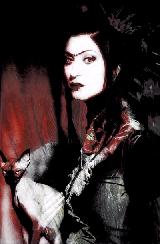
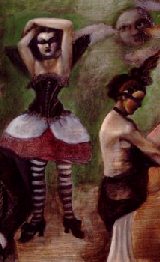
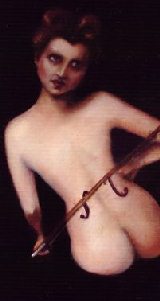
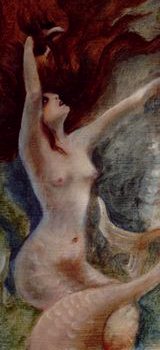
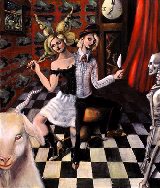
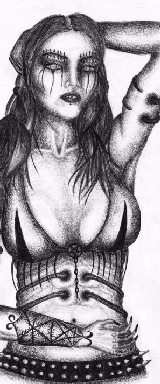
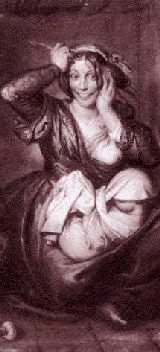
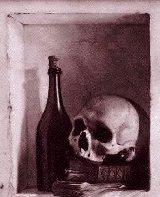

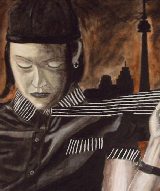















|
|
BIBLIOGRAPHIE / Bibliographie
Critical contributions A Select List of Important Gothic Novels, Tales, etc., 1700 to 1900. See also the bibliography of articles FANTASTIQUE, FIN DE SIÈCLE and FRÉNÉTIQUE. Among numerous anthologies and reference works | |
Click Here to Join some Webrings